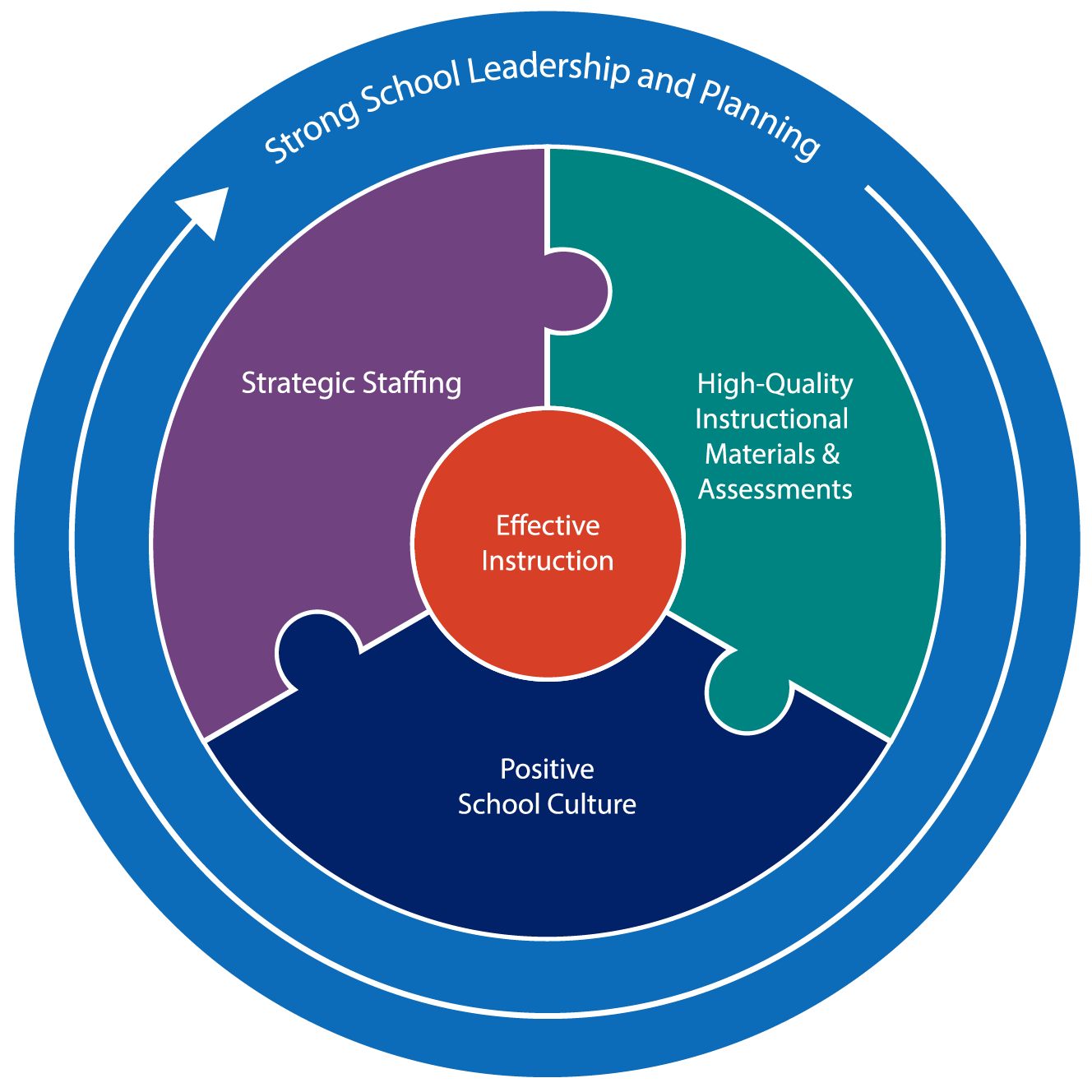The Framework
A clear vision for what districts and schools across the state do to ensure an excellent education for all Texas students.

A Clear Vision
At the core of effective schools is effective instruction: interactions between students, teachers, and content determine learning outcomes. This instructional core is strengthened and supported by strategic staffing, high-quality instructional materials and assessments, and positive school culture. Strong school leadership and careful planning encompass and ensure each of these levers.
The Effective Schools Framework consists of a set of district commitments and, for schools, essential actions. District Commitments describe what local education agencies do to ensure that schools are successful. The Essential Actions describe what the most effective schools do to support powerful teaching and learning.
ESF Levers
The ESF defines 5 Levers that are essential in high performing campuses. Each lever includes:

District Commitments
District commitments describe what local education agencies do to ensure that schools are set up for success.

Essential Actions
Essential Actions describe what the most effective schools do to support powerful teaching and learning.

Foundational Essential Actions
Each lever has one foundational essential action, which schools should address first in continuous improvement efforts, as they provide the foundation upon which the other essential actions develop.

Key Practices
Each Essential Action includes a set of key practices that define what the essential action entails when implemented with fidelity.
Lever 1
STRONG SCHOOL LEADERSHIP AND PLANNING
Effective campus instructional leaders with clear roles and responsibilities develop, implement, and monitor campus systems and structures that are aligned to a compelling school mission, vision, values, and goals rooted in student achievement.
1.1
Developing campus instructional leaders (principal, assistant principal, teacher leaders, and counselors) with clear roles and responsibilities
1.2
Compelling and aligned vision, mission, goals, values focused on a safe environment, high expectations, and rigorous instruction
1.3
Focused plan development and regular monitoring of implementation and outcomes
Lever 2
STRATEGIC STAFFING
Campus leadership retains effective, well-supported teachers by strategically recruiting, selecting, assigning and inducting teachers so that all students have access to high-quality educators.
2.1
Recruit, select, assign, induct, and retain a full staff of highly qualified educators
Lever 3
POSITIVE SCHOOL CULTURE
Campus systems support positive school culture through explicit behavioral expectations, school-wide culture routines, proactive and responsive student support services, and involved families and communities.
3.1
Explicit school-wide behavioral expectations and culture routines
3.2
Proactive and responsive student support services
3.3
Involving families and community
Lever 4
High-Quality Instructional Materials and Assessments
All students engage daily with TEKS-aligned, high-quality instructional materials, and assessments that support learning at appropriate levels of rigor.
4.1
Daily use of high-quality instructional materials
Lever 5
EFFECTIVE INSTRUCTION
Campus leaders provide teachers with job-embedded professional development, including observation and feedback cycles, and access to time and data needed to reflect, adjust, and deliver instruction that meets the needs of all students.
5.1
Professional Development for Effective Classroom Instruction
5.2
Build teacher capacity through observation and feedback cycles
5.3
Data-driven instruction
5.4
MTSS for students with learning gaps

